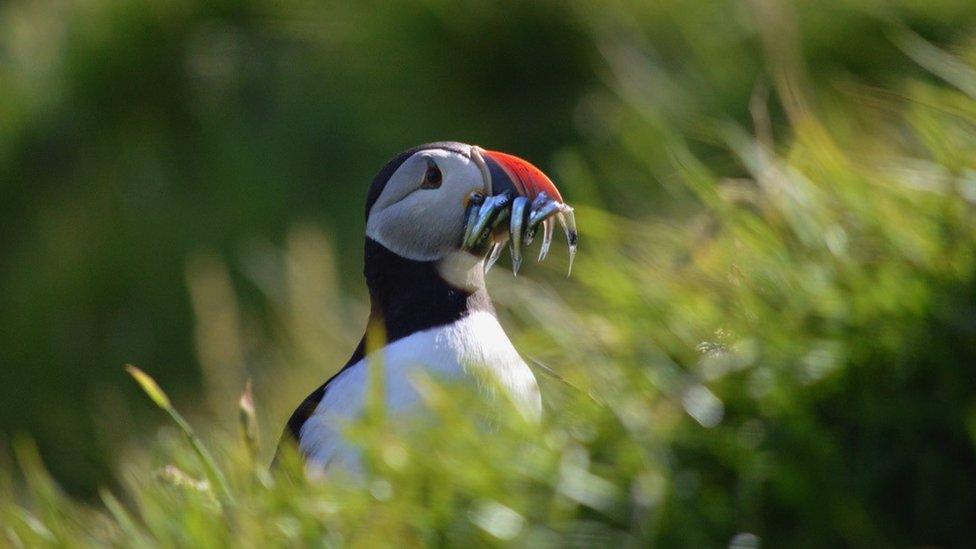Conservation: Rare Caribbean wildlife species saved from extinction
- Published
- comments
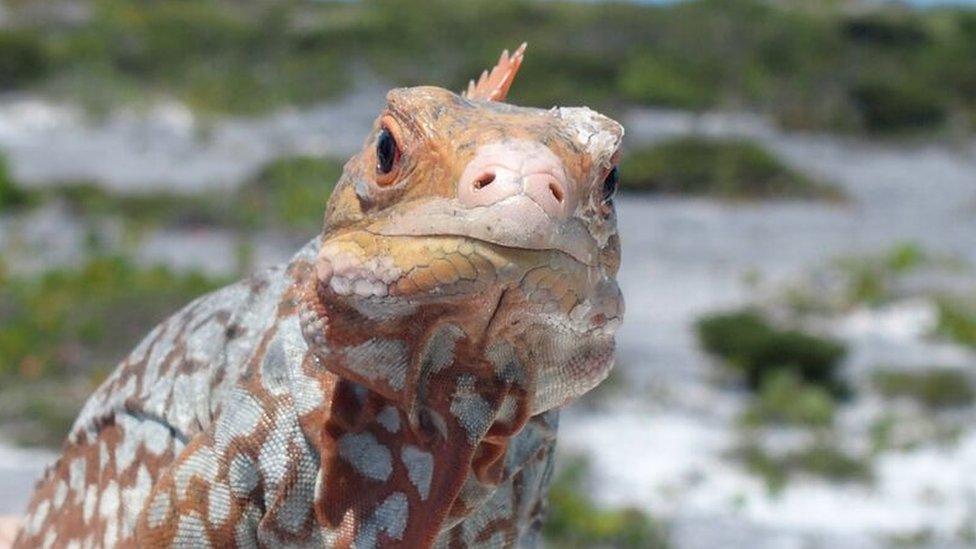
While there were only 150 White Cay rock iguanas some 30 years ago, there are now over 2,000
Have you heard of the Antiguan racer, the White cay rock iguana and the Sombrero ground lizard?
They're all rare species that have been brought back from the brink of extinction in the Caribbean.
The Caribbean islands, home to thousands of rare animals, have suffered the highest extinction rates in modern history.
But conservationists that have been working to protect nature and animals in the region for over 30 years have now restored their thirtieth island, helping to save over 12 more species.
Here's a look at some of the animals they're helping to survive.
Antiguan racer

Experts say it isn't always easy to protect snakes
Once known as the world's rarest snake, the Antiguan racers are harmless and incredibly slow moving.
In 1995 it was thought that there were just 50 of them left, all on one small island.
Experts say it can be difficult to protect snakes because they aren't always the most popular animal.
Now though there are over 1,000 living on four islands.
White cay rock iguana
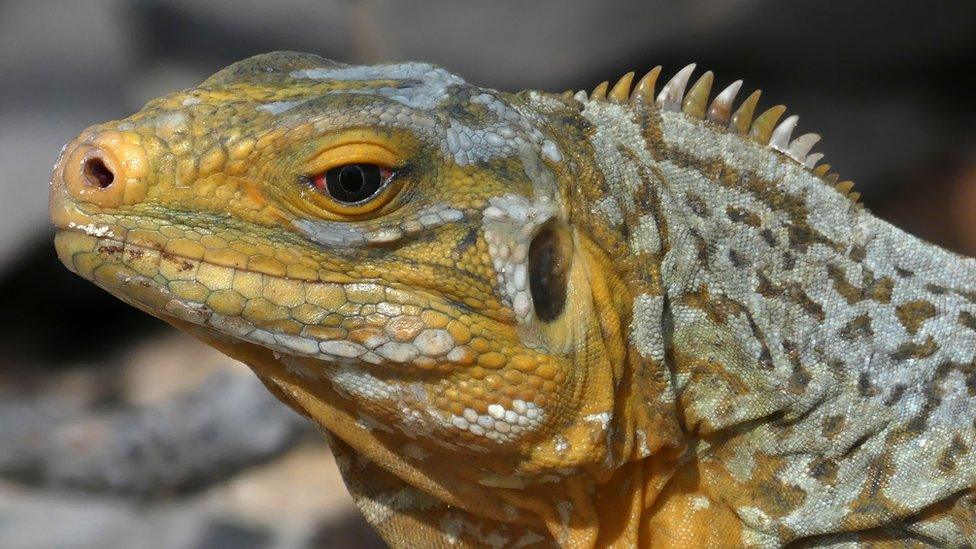
Conservationists removed a colony of ship rats from the island where these iguanas were living to help them thrive
These iguanas were on the brink of extinction 30 years ago, with fewer than 150 living on a small island in the Bahamas.
But today they have a population of over 2,000.
Removing certain animals from the area helped protect the species, like non-native raccoons and rats, as well as giving the iguana protection under the law.
Sombrero ground lizard

This lizard is named after the island where it lives, not because it wears a hat!
These lizards live on Sombrero Island off the coast of Anguilla, which has been impacted by deforestation and severe hurricanes.
The number of lizards fell to less than 100.
But through techniques like removing invasive species, the lizard's population has more than tripled since 2021.
Saint Lucia whiptail lizard
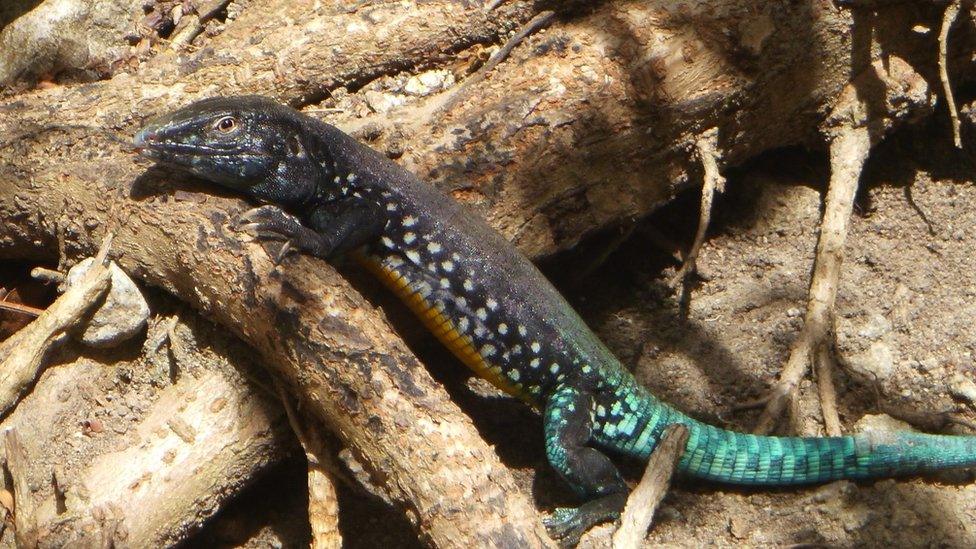
This lizard has a very recognisable tail
This lizard is one of 2,000 species native to the island of Saint Lucia.
With a population of less than 1,000, conservationists hope the lizard can now thrive in areas free of predators.
Conservationists also moved some whiptails to islands after removing invasive rats that would have preyed on them.
- Published9 June 2022
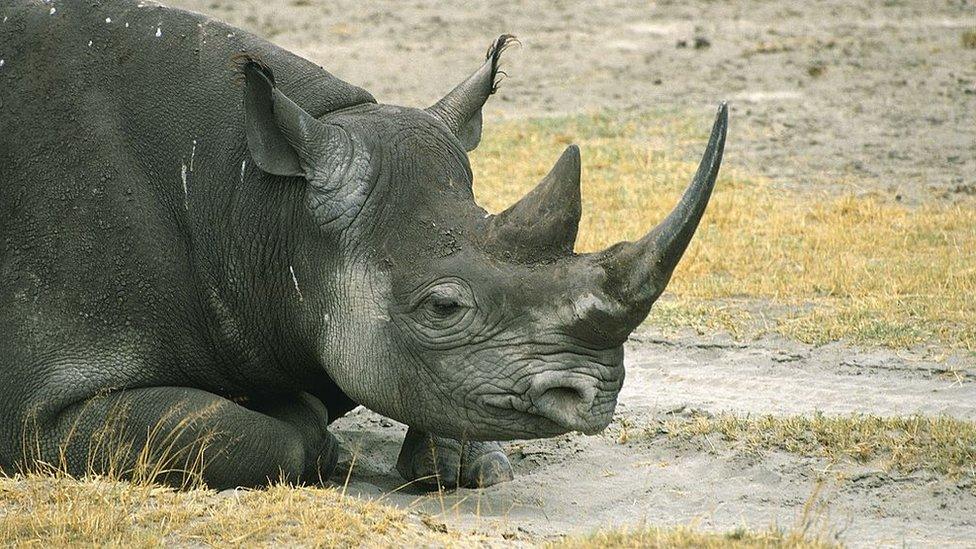
- Published13 December 2023
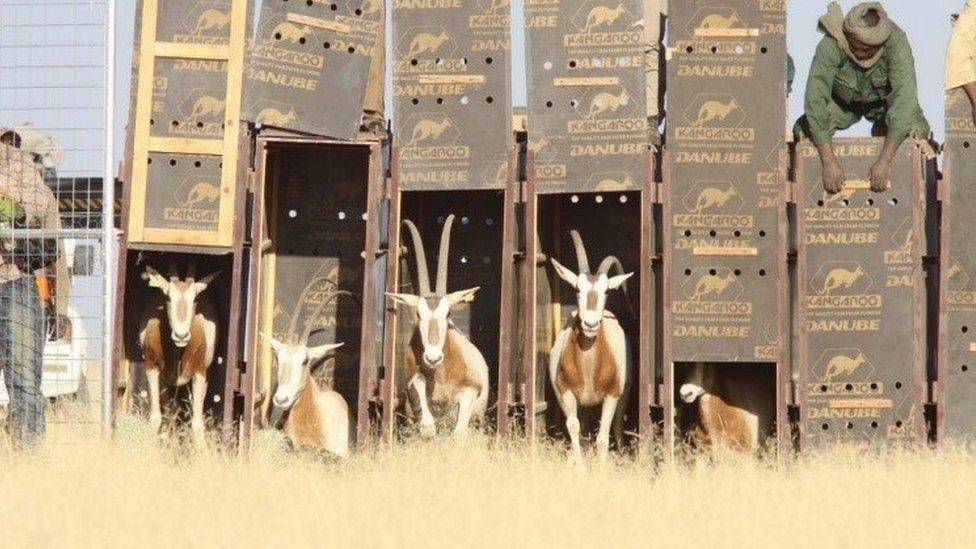
- Published28 September 2023
